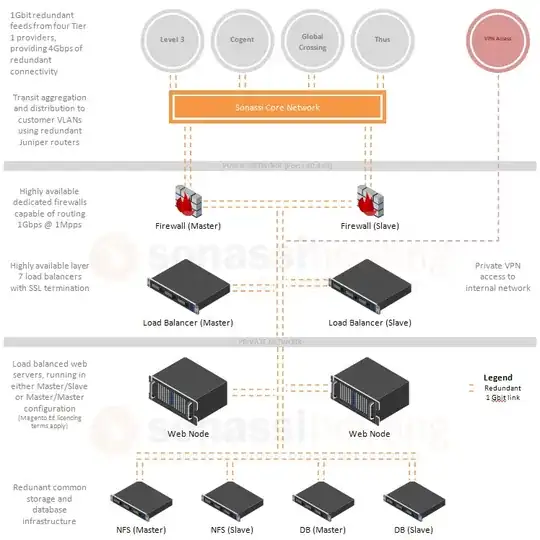I have to do a setup for Magento. My constraint is primarily ease of setup and fault tolerance/fail over. Furthermore costs are an issue. I have three identical physical servers to get the job done. Each server node has an i7 quad core, 16GB RAM, and 2x3TB HD in a software RAID 1 configuration. Each node runs Ubuntu 12.04. right now. I have an additional IP address which can be routed to any of these nodes.
The Magento shop has max. 1000 products, 50% of it are bundle products. I would estimate that max. 10 users are active at once. This leads me to the conclusion, that performance is not top priority here.
My first setup idea
One node (lb) runs nginx as a load balancer. The additional IP is used with domain name and routed to this node by default. Nginx distributes the load equally to the other two nodes (shop1, shop2). Shop1 and shop2 are configured equally: each server runs Apache2 and MySQL. The Mysqls are configured with master/slave replication.
My failover strategy:
- Lb fails => Route IP to shop1 (MySQL master), continue.
- Shop1 fails => Lb will handle that automatically, promote MySQL slave on shop2 to master, reconfigure Magento to use shop2 for writes, continue.
- Shop2 fails => Lb will handle that automatically, continue.
Is this a sane strategy? Has anyone done a similar setup with Magento?
My second setup idea
Another way to do it would be to use drbd for storing the MySQL data files on shop1 and shop2. I understand that in this scenario only one node/MySQL instance can be active and the other is used as hot standby. So in case shop1 fails, I would start up MySQL on shop2, route the IP to shop2, and continue. I like that as the MySQL setup is easier and the nodes can be configured 99% identical. So in this case the load balancer becomes useless and I have a spare server.
My third setup idea
The third way might be master-master replication of MySQL databases. However, in my optinion this might be tricky, as Magento isn't build for this scenario (e.g. conflicting ids for new rows). I would not do that until I have heard of a working example.
Could you give me an advice which route to follow? There seems not one "good" way to do it. E.g. I read blog posts which describe a MySQL master/slave setup for Magento, but elsewhere I read, that data might get duplicated when the slave lags behind the master (e.g. when an order is placed, a customer might get created twice). I'm kind of lost here.
